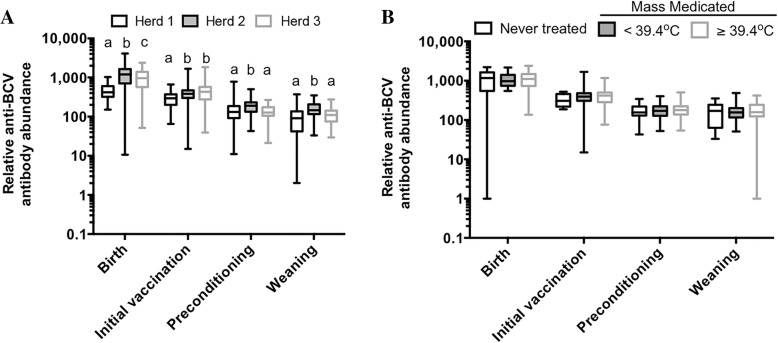Fig. 5.
Relationship between anti-BCV antibody abundance and BRD. a Passively acquired immunity to BCV (maternal antibodies) was evaluated in a subset of calves from each herd (n = 169, [herd 1 = 33; herd 2 = 82; herd 3 = 54]) by measuring the abundance of serum anti-BCV antibodies in the calf at 18–48 h after birth. At initial vaccination, preconditioning and weaning, anti-BCV antibody levels were determined in serum samples from 60 randomly selected calves from each herd to determine the mean and range of antibodies in each herd at each production stage. b Anti-BCV antibody levels for calves from Herd 2 (from Figs. 4 and 5a) were re-plotted based on rectal temperature at the time of mass treatment for BRD: those mass treated for BRD with a rectal temperature ≥ 39.4 °C (n = 14 at birth and 27 all other time points) and those mass treated for BRD with a rectal temperature < 39.4 °C (n = 25 at birth and 49 at all other time points). These values were compared to those from animals of the same herd that remained untreated for BRD (n = 42 at birth and 15 at all other time points). Differences in mean antibody abundance were based on contrasts of least-squares means being different from zero in models with location and time as fixed effects (repeated measures); contrasts were evaluated if the overall p value for location was significant. Herds with the same superscript were not significantly different (P > 0.05) in these contrasts

